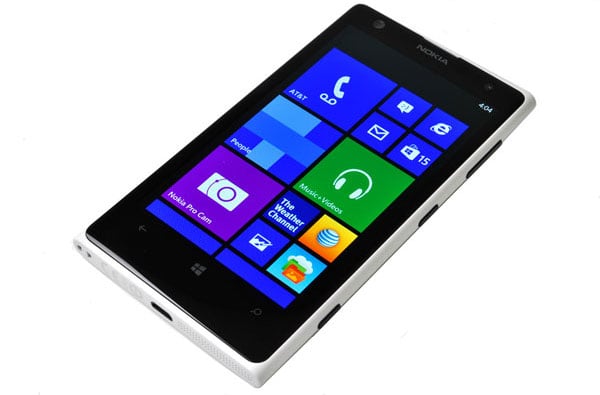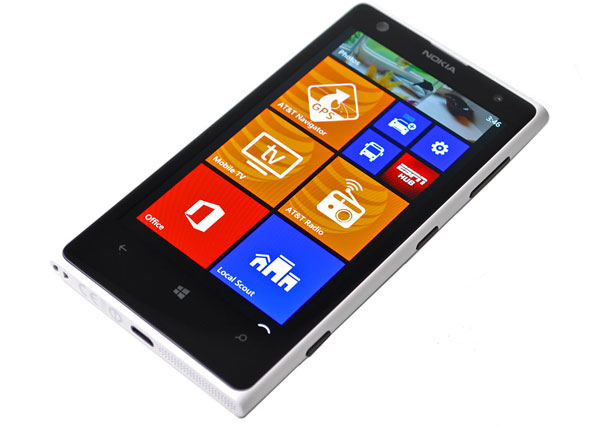Nokia Lumia 1020 Video and Photo Shoot Preview
Nokia Lumia 1020 Video and Photo Preview
Nokia has been trying hard to play catch-up in the smartphone race for a long time now, and as Microsoft's strategic partner with the Windows Phone operating system and ecosystem, they've got their work cut out for them, with a gridiron full of Android and iOS devices offering compelling and powerful solutions. And so, Nokia, perhaps more-so than any other smartphone manufacturer in the game right now, needed to find a way to make something special. The new Nokia Lumia 1020, though it sports essentially the same internals and display as Nokia's Lumia 920, most definitely is different, and perhaps even a very attractive alternative, depending on your specific needs.
41 megapixels of resolution, floating image stabilization and a powerful camera app to back it up, will make the Lumia 1020 pretty "special" to a lot of people, some of whom might be considering a Windows Phone for the first time as a result. We're quickly working up a detailed review on Nokia's new Lumia 1020 but wanted to give you our initial impressions of the device and its camera performance, here in this quick-take preview.
First, we'll give you our nickle tour and hands-on demo of the Lumia 1020, then we'll let some pictures we took with the phone weigh in with their worth of a thousand words or so.

Nokia Lumia 1020 - Currently $299 on contract with AT&T
Be sure to catch the HD video recording demo toward the end of our hands-on...

As Sir Mix a Lot once so poignantly noted, baby's got back.




Nokia' s Pro Cam app - One of the best smartphone camera apps, regardless of platform.
The downside is that there is some delay between taking shots. So you don't have quite the reaction time you would with a traditional camera. When you snap a picture, the 1020's camera grabs two versions of the shot, a large full resolution (7700x4300, roughly) shot with a huge 11MB file size is captured and an additional 5MP image is derived from that and stored as well. The results, especially in decent lighting, can be impressive.




Fender Stratocaster - No flash used in this indoor shot.


Studio-lit product shots taken without the flash...

41 megapixels of resolution, floating image stabilization and a powerful camera app to back it up, will make the Lumia 1020 pretty "special" to a lot of people, some of whom might be considering a Windows Phone for the first time as a result. We're quickly working up a detailed review on Nokia's new Lumia 1020 but wanted to give you our initial impressions of the device and its camera performance, here in this quick-take preview.
First, we'll give you our nickle tour and hands-on demo of the Lumia 1020, then we'll let some pictures we took with the phone weigh in with their worth of a thousand words or so.

Nokia Lumia 1020 - Currently $299 on contract with AT&T
Be sure to catch the HD video recording demo toward the end of our hands-on...
The Lumia 1020's 4.5-inch AMOLED display has a very competitive 334ppi pixel density with a native resolution of 768X1280 (correct, you get 48 more pixels in there versus standard 720X1280 displays) and its brightness and contrast really pop. Though my personal preference is a 5-inch display these days, the Lumia 1020's display, like its predecessor, the 920, is really one of the best on the market right now. But the 1020's display and standard Windows Phone build-out isn't what set the new Lumia apart - it's the bump on its backside.

As Sir Mix a Lot once so poignantly noted, baby's got back.
I, like, big... oh, just cut it out. Stop it. Yes, that is a bit of a protuberance there for sure. Surprisingly, however, the phone is still very "pocketable" and you don't really notice it much unless you're wearing skinny jeans - which I don't. Ever. Where you will sometimes notice it is when you set the phone down. The phone doesn't lay perfectly flat. It's a minor annoyance, or none at all, depending on your perspective. Nokia places an information card inside the Lumia 1020's box entitled "The sound of blur-free photos." You can actually hear the ball bearings rattling slightly inside the 1020's PureView camera, if you shake the phone, or sometimes when you turn on the camera app if you're moving around. This "floating image stabilization" technology inside the Lumia 1020's camera makes a huge difference in image quality, as you'll see shortly.




Nokia' s Pro Cam app - One of the best smartphone camera apps, regardless of platform.
Nokia's Pro Cam app is comprised of a really nice dial interface that offers virtually all of the controls you'd find in a DSLR camera. From White Balance, to ISO, Focus, Exposure and Flash Control, it's all in there. Once you familiarize yourself with the controls and how they can best affect your shots for the better, you can achieve some rather impressive results, with a little fiddling.
The downside is that there is some delay between taking shots. So you don't have quite the reaction time you would with a traditional camera. When you snap a picture, the 1020's camera grabs two versions of the shot, a large full resolution (7700x4300, roughly) shot with a huge 11MB file size is captured and an additional 5MP image is derived from that and stored as well. The results, especially in decent lighting, can be impressive.



Outdoors shots are captured with excellent sharpness and color balance. The 1020's camera really does rival standard point-and-shoot camera quality. In certain aspects it's even better, capturing intricate detail that you'd traditionally only capture with a DSLR. With the high resolution shot's wider field of view, you can capture a large area and then zoom in and crop your shots, if you like, in the post-processing software of your choice.

Fender Stratocaster - No flash used in this indoor shot.
Low light shots do take more finesse in setting up and also come with a bit more grain and noise, but far less than any phone camera we've tested to date. The on-board Xenon flash does a really nice job of lighting up indoor scenes, again rivaling some point-and-shoot cameras but not higher-end models. What's impressive as well, is that the the Lumia 1020's floating image stabilization allows for sharp image quality in low light with no flash, as we demonstrated in the picture of the Stratocaster above. It did take a steady hand but still, as you can see, the shot is really clean, especially for phone camera results.


Studio-lit product shots taken without the flash...
We had a little problem getting color balance just right in our studio-lit shots but we've only had a few days to play with Nokia's Pro Cam app controls. With some practice and tweaking, we're confident better results can be achieved.

That wraps-up our initial preview of the Nokia Lumia 1020. Make sure you stay tuned to our full review of Nokia's new flagship device. We'll have a full set of benchmarks, more video and still image samples to peer over and of course our final rating and evaluation of the new Nokia Lumia 1020.






